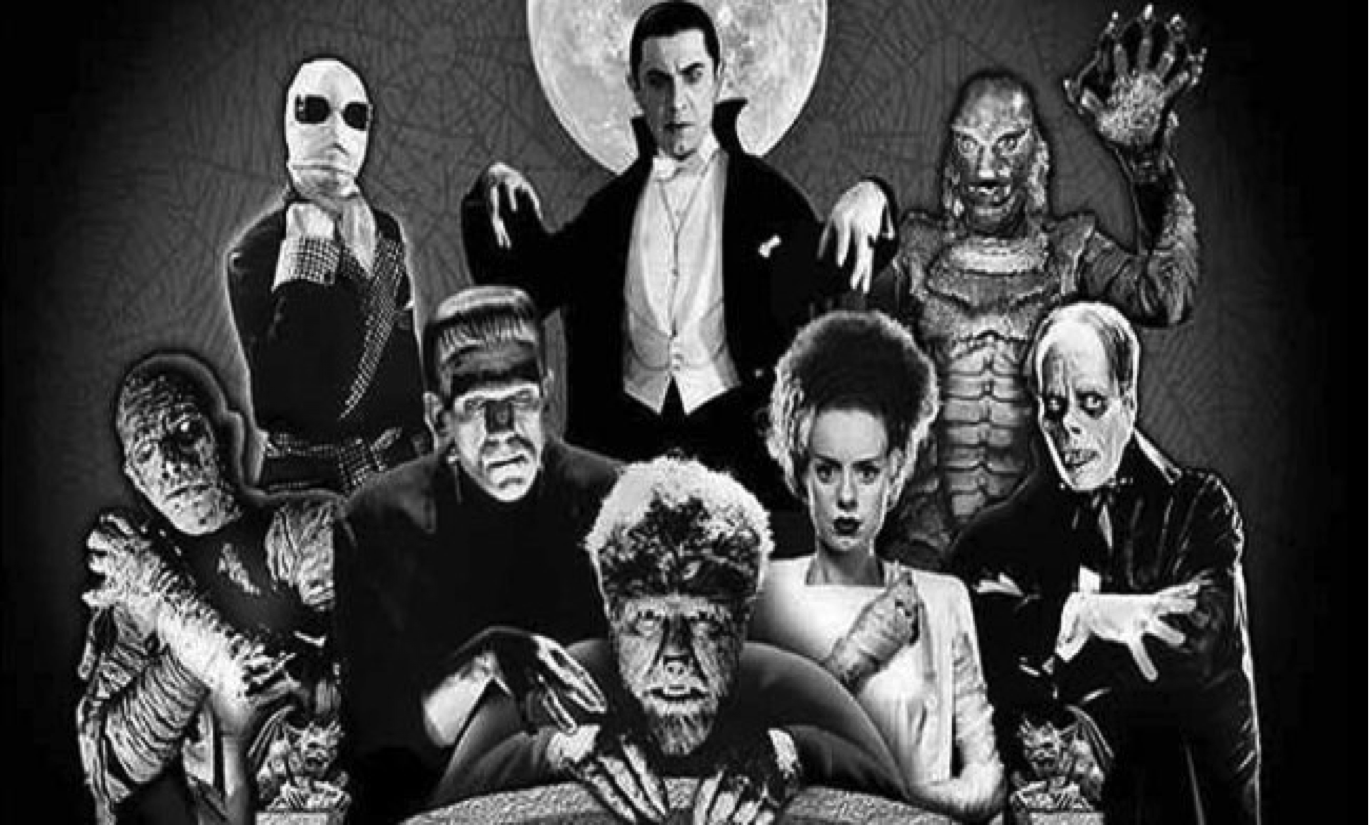Horror Movies: How Have They Changed?
Since the early 1930s, after the release of the first talkies movie, monster movies became a major hit. Films like Dracula and Frankenstein set the president for horror films during this period.
Here’s a look back at a few of the original "monster” movies and how these supernatural creatures were portrayed during the 1930s/1940s in film:
- Dracula (1931) —> The film begins with local residents speaking about the legend of Count Dracula as a vampire, creatures that feeds on the blood of humans. Renfield, who plays a logical minded non-believer at the beginning states that it is a matter of business. Renfield says that he must go up to visit Count Dracula. The representation of vampires in Dracula is shown through the coffin in a dark, dirty basement with bugs and rodents. This image is not as glamorous as how vamps are portrayed in today’s movies and television. However, there are elements of vampire myths with strong ties to how they are viewed in television and movies today. Even the smallest amount of blood draws in a Vampire, which is still true in Vampire film and shows today. In Dracula, even the sight of a cross repels vampires. This mythical ideal has also been used in on-screen content such as Buffy the Vampire Slayer. Dracula’s appearance doesn’t appear in the mirror, which goes along with myth that vampires can’t show a reflection in mirrors.
- However, there are other elements, both mythical concepts of vampires as well as on-screen presentation and formatting, that has changed over the years. For example, the light that hits around Dracula's eyes, magnifies his eyes and leaves the rest of his face in shadows. Dracula’s lit up eyes seemingly draw in his victims, while mildly paralyzing them enough so that he can feed on them without a fight. This image of glowing eyes in vampires hasn’t changed completely, but has been altered in correlation with technological advancements. Dracula is able to enter into Lucy Westenra's room without an invitation inside, which goes against the famous myth that vampires need to be asked inside a person’s home; a concept that is often employed in vampire themed movies and television today. Renfield belongs to to his “Master,” Count Dracula. Renfield’s persona is different. It appears he has gone “crazy.” His new behavior is also shown in a newspaper story that states that was “a raving maniac; his craving to devour ants, flies, and other small living things to obtain their blood puzzles scientists. At present he is under observation in Doctor Seward’s Sanitarium near London.”
- Professor Van Helsing believes that Lucy death was the result of a vampire; but his associate Dr. Seward argues “Modern science does not admit to such a creature.” This theme of believe vs. non-believe and sane vs. insane appeared to be a very structured way of introducing the supernatural; we also see this concept in movies such as Frankenstein and Wolf Man.
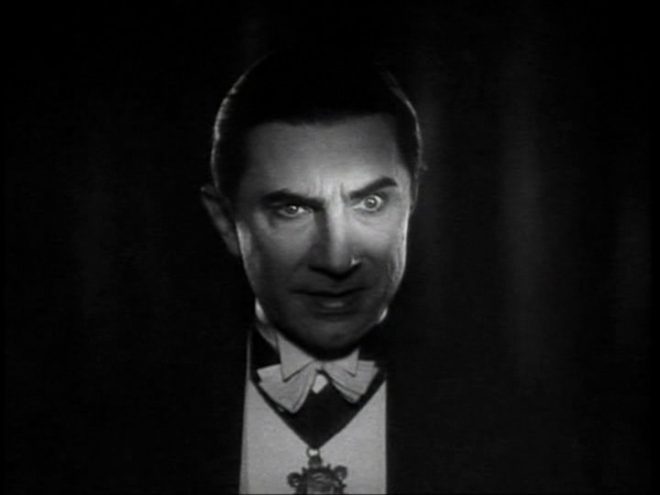
- Frankenstein (1931) —> The film begins with the famous opening presentation of Frankenstein that warns the audience what they are about to see may “horrify you, and may even shock you”; a presentation that is often reused even today when introducing a Frankenstein-themed story line. The story opens up with Henry Frankenstein, a scientists who is creating new unusual experiments and attempting to creating life through science by his “own hands.” When those closest to Henry discover his disturbing experiments, Victor calls Henry crazy at the idea that Henry thinks he could create such a monster. Henry truly believes that his experiment will work, stating, “A minute ago you said I was crazy. But tomorrow, we’ll see about that." But it is important to note that even if Henry's invention works, doesn’t make him any less crazy. Maybe he is crazy for simply conjuring up the idea to create this inhuman creature in the first place, whether it works or not.
- Once Henry’s creation comes to life, he screams, “It’s alive! Now I know what it feels like to be God.” Henry doesn’t see the flaws in his creation plan or that it could be potentially dangerous, and that no human being has the power to play God. Henry refuses that it could be dangerous when Dr. Waldman addresses this issue with Henry. Henry seems to believe that dangerous and adventurous are synonymous. “You have created a monster and it will destroy you,” said the doctor. “Patience, I believe in this monster, as you call it,” Henry responds. After Henry experiences his creation's behaviors, he starts to realize that he created a monster. Henry and Dr. Waldman then attempt to try to kill the creature.
- The audience can see these “shocking” actions from the creature of Frankenstein coming. There is a visible lead up to Frankenstein’s attacks on Dr. Waldman and Elizabeth create a sense of build up and even intensity, to some extent, for audience members. Yet the build up and intensity differs from movies and tv shows today. On-screen horror content today is created by using pop-outs and sudden actions shock audiences. Every scene is pre-meditated, from the slow creation of Frankenstein to the crowd of people with lit torches chasing down Frankenstein. It is believed that Frankenstein, the creature, is finally dead and the town rejoices. However, the film Frankenstein’s Bride reveals that Frankenstein is still alive. This method of shocking the audience by bringing about a part 2 to the story is an example of when films and television first began; a method that still exists today.
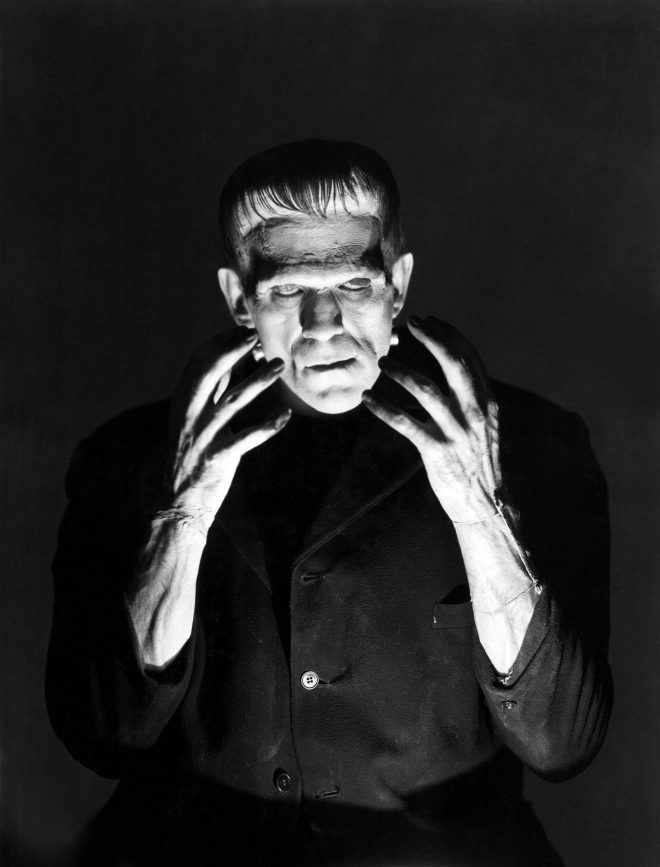
- The Wolf Man (1941) —> The film opens up by providing a definition at the beginning; a method that rarely, if ever, that still lives on in films and television today. Lycanthropy (werewolfism) - a disease of the mind in which human beings imagine they are wolf-men. Larry Talbot, who is the lead role, portrays a kind gentleman with clear moral boundaries and standards. Yet, his morality is put into question after killing the fortune teller, who was a were-wolf. Although Larry thought he simply killed a wolf, the appearance of a dead man challenged everything he thought that he knew. Were-wolf myths in the film aren’t as common as in today’s on-screen were-wolf lore. For example, “A were-wolf is a human being who at certain times of the year turns into a wolf,” says Gwen Conliffe. “Every were-wolf is market with a pentagram, it sees it in the palm of his next victims hand,” she continues.
- Although there are no surprises, with completely expected scenes, audiences during the 1940s may have had different perceptions of shocking and unexpected occurrences in films. Maybe it is the telling of the lead character’s story, rather than unexpected plot twists, that entertained audiences during the 1930s and 1940s.
- Larry’s first kill as a were-wolf shows hesitation, briefly addressing his inner humanity and the morality of his human side. Yet, the animalistic primal urges lead Larry to ultimately kill. Larry is hated by the towns people as an animalistic murder for killing the psychic who he seemingly thought was a wolf. The doctor views Larry as sick when Larry asks the doctor if were-wolves exist; because he is mentally sick, the Dr. states that he should leave town as a result of his “sickness”; Sir John Talbot ties up his son, Larry. Sir John tells the doctor that Larry will realize this is all in his head after the hunt is over. However, the gypsie women’s words force Sir John to confront his thoughts/suspicions all along that maybe Larry really is a were-wolf. When the were-wolf Larry attacks Sir John, Sir John has no choice but to kill the animal, his son.
- As in movies such as Dracula and Frankenstein, Wolf Man presents a similar theme of these supernatural creatures in which you need to see to believe. However, seeing these creatures also brings these characters to question their own sanity.
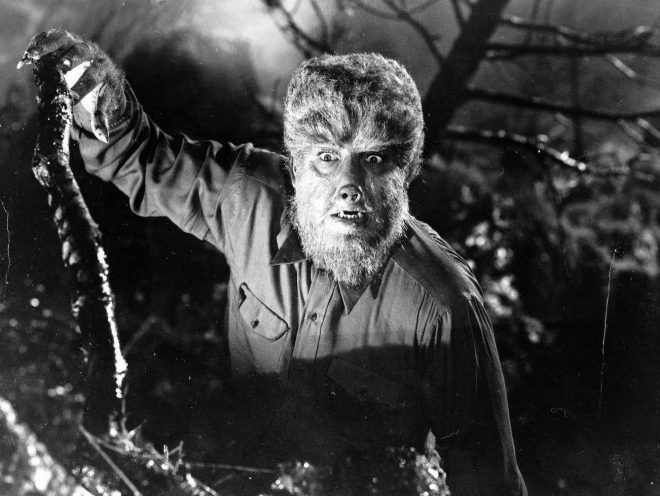
- The Wizard of Oz (1939) —> This film differs from the typical image of scary movies involving a supernatural creature/s during the 1930s/1940s period; Yet, the Wizard of Oz was the first popular portrayal of witches in movies. The film doesn’t confine the image of witches as simply evil or wicked. The Wizard of Oz shows the good and beautiful witch, Glinda, who helps Dorothy; versus the Wicked Witch of the West, who sets out for destruction and the powerful Ruby slippers that Dorothy; possesses. This interesting plot line that brings an array of unique, un-human creatures into one story line. Most of the un-human creatures, such as the lion, the scarecrow and the tin man are all morally good; they all have good intentions, despite their self perceived flaws of lacking a heart, a brain, or courage. Movies and tv shows on the subject of witches didn’t become popular until the after the 1960s. The topic on witches expanded largely in the mid 1980s and into the 1990s with films like The Witches of Eastwick, Hocus Pocus, Practical Magic, The Blair Witch Project, etc.
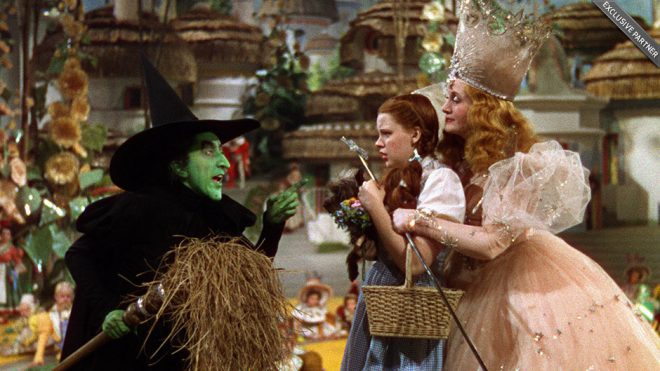
In nearly 100 years, the portrayal of on-screen monster films and television has changed a lot. Movies and television have evolved a lot over a century. But one of its most prevalent examples is in the supernatural/horror genre. Today, horror movies have more intense scenes, more complex and heavily involved story lines, and technology that has majorly enhanced the appearance of these mythical supernatural creatures. Even the depiction of these monsters and their character arcs have become more involved over time. New or old, it is interesting to see the evolution of these legendary on-screen creatures. And of course the original on-screen depiction of the monsters that started it all.

